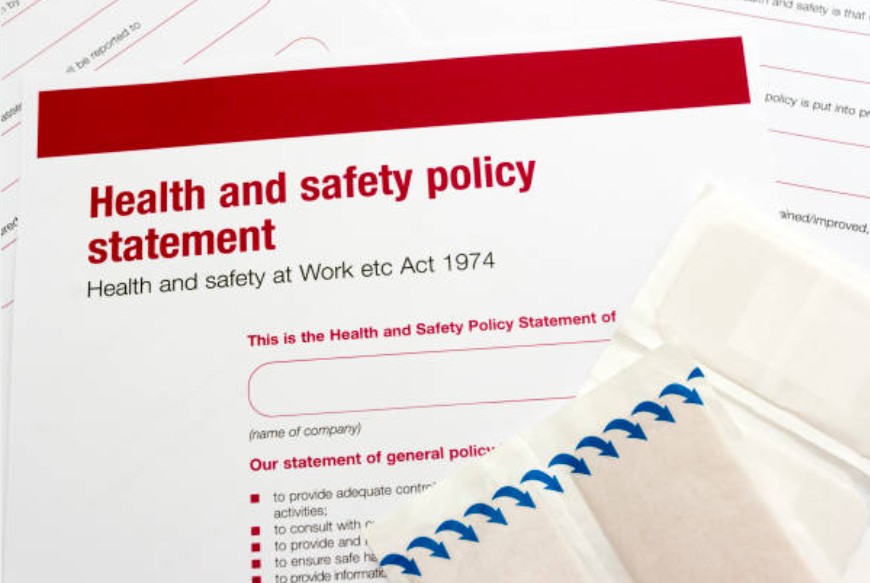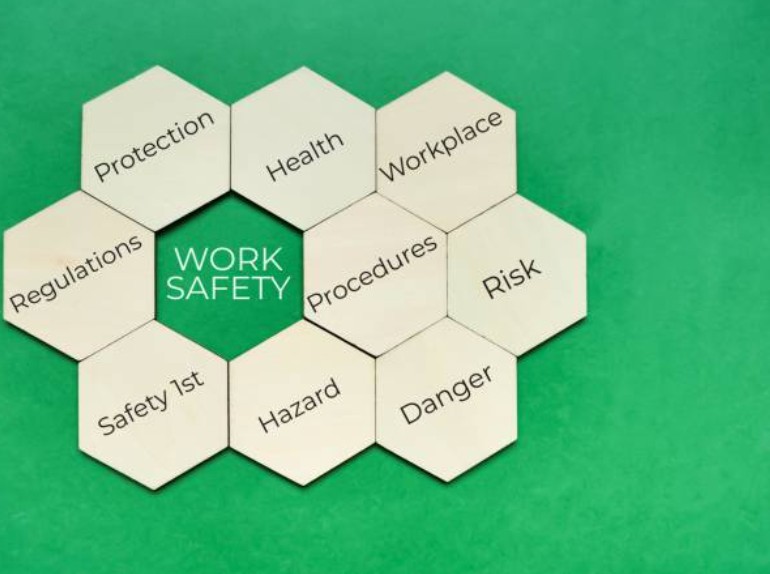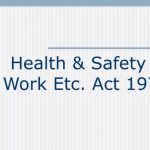At uknewsblog.co.uk, we believe that a robust Health and Safety Policy is not just a legal necessity, but also a strategic tool for safeguarding your business and its employees. Today’s detailed analysis answers the question: What are the Key Components of a Health and Safety Policy? Our in-depth guide is tailored for UK businesses, providing you with fresh insights, innovative best practices, and practical tips to create a policy that stands the test of time.
Why Is a Health and Safety Policy Essential for Your Business?
A well-crafted Health and Safety Policy is the backbone of a safe workplace. In an ever-evolving business landscape, where new challenges emerge regularly, having a clearly defined policy ensures that your organisation is proactive about employee welfare and regulatory compliance.
Key reasons include:
- Legal Compliance: Meeting the stringent requirements of UK health and safety legislation.
- Risk Mitigation: Identifying hazards and reducing workplace accidents.
- Employee Confidence: Demonstrating a genuine commitment to staff welfare.
- Operational Efficiency: Minimising disruptions caused by workplace incidents.
This foundational document not only protects your employees but also shields your business from potential legal repercussions and financial losses.
What Does a Comprehensive Health and Safety Policy Encompass?

When pondering what are the Key Components of a Health and Safety Policy are? It’s important to consider the broad spectrum of elements that must be integrated. A comprehensive policy should detail every aspect of workplace safety, from strategic planning to emergency response protocols.
Core elements include:
- Declaration of Commitment: A clear statement from senior management affirming the company’s dedication to safety.
- Defined Roles and Responsibilities: An organisational chart that outlines accountability for safety at every level.
- Thorough Risk Assessments: Procedures to identify, evaluate, and manage potential hazards.
- Effective Control Measures: Practical strategies to reduce risk exposure.
- Employee Training Programs: Continuous learning modules and hands-on training sessions.
- Regular Monitoring and Audits: Systems to review and update the policy periodically.
- Emergency and Incident Procedures: Detailed action plans for emergencies and unforeseen events.
This multi-layered approach not only ensures compliance but also builds a culture where every member is invested in maintaining a secure work environment.
How Do the Key Components Enhance Workplace Safety?
By addressing each element systematically, your policy becomes a living document that drives continuous improvement. For instance, a clear declaration of intent paired with defined roles ensures that everyone knows their responsibilities. In turn, comprehensive risk assessments and tailored control measures actively reduce the chances of accidents and injuries.
Additional insights include:
- Enhanced Communication: Establishing clear channels for reporting hazards and incidents.
- Employee Engagement: Involving staff in safety drills and feedback sessions, fostering a sense of ownership.
- Proactive Incident Management: Utilizing data-driven insights to preemptively address safety concerns.
Such integration ultimately creates a robust safety network, ensuring that both preventive and reactive measures are optimally balanced.
Which Best Practices Can You Implement for Optimal Safety Compliance?
UK businesses are continually innovating to improve safety standards. By embracing modern methodologies and technology, companies can enhance their risk management strategies. Here’s a look at current best practices:
| Component | Description | 2025 Best Practice |
| Declaration of Commitment | Top-down safety vision endorsed by leadership | Incorporate multi-channel communication and periodic reaffirmation |
| Defined Roles and Responsibilities | Clear assignment of duties across the organisation | Use digital dashboards to track accountability and progress |
| Risk Assessments | Ongoing identification and evaluation of hazards | Leverage AI and real-time data analytics for continuous hazard monitoring |
| Control Measures | Implementation of safety protocols | Integrate IoT sensors and automated control systems to mitigate risks |
| Training Programs | Regular, interactive safety training sessions | Adopt e-learning platforms with interactive simulations |
| Monitoring and Audits | Periodic reviews and updates of safety practices | Use automated systems for quarterly audits and performance feedback |
| Emergency Procedures | Detailed, actionable plans for crises | Utilize mobile alert systems and automated emergency response applications |
By integrating these best practices, you not only stay compliant with UK standards but also enhance the overall safety culture within your organisation.
How Can Continuous Improvement Be Driven Through Your Policy?

A static policy quickly becomes outdated in a fast-paced environment. Continuous improvement is key. Regular reviews, technological upgrades, and active feedback loops are essential to keeping your policy relevant.
Strategies for continuous improvement include:
- Scheduled Reviews: Implement a review cycle that examines the policy quarterly or after any significant workplace change.
- Employee Feedback: Establish channels for staff to provide input on safety practices.
- Technological Integration: Update your risk assessment tools and control measures with the latest innovations.
- Performance Metrics: Set clear, measurable targets for safety outcomes and track them over time.
These strategies ensure that your policy evolves alongside emerging challenges and technological advancements, fostering an environment where safety is an ongoing priority.
How Does Technology Enhance Modern Health and Safety Practices?
Technology plays an increasingly critical role in modernising Health and Safety Policies. Digital tools not only simplify risk assessments but also offer real-time data, enabling quicker and more accurate decision-making.
Key technological contributions include:
- Real-Time Monitoring: AI-driven systems that provide instantaneous alerts on potential hazards.
- Digital Training Platforms: Interactive e-learning courses that keep employees informed and engaged.
- Automated Audits: Software solutions that streamline the auditing process, ensuring consistency and accuracy.
- Data Analytics: Tools that compile and analyse safety data to predict and prevent future incidents.
Embracing these technologies transforms your policy from a static document into a dynamic system that actively contributes to the well-being of your workforce.
What Are the Key Components of a Health and Safety Policy?

This dedicated section reinforces the keyword and dives deep into each critical element:
Declaration of Commitment:
-
- Establishes a top-down approach with clear messaging from leadership, setting the tone for a culture of safety.
Defined Roles and Responsibilities:
-
- Outlines a detailed organisational structure, ensuring that every individual understands their role in maintaining safety.
Thorough Risk Assessments:
-
- Utilises both traditional methods and cutting-edge technology to identify and evaluate potential hazards continuously.
Effective Control Measures:
-
- Implements robust strategies to mitigate risks, ranging from physical modifications to administrative controls.
Comprehensive Training Programs:
-
- Regular and interactive training sessions that equip employees with the knowledge and skills necessary to handle emergencies.
Monitoring and Auditing Mechanisms:
-
- Uses automated systems and regular audits to ensure adherence to safety protocols and identify areas for improvement.
Emergency and Incident Procedures:
-
- Provides clear, actionable guidelines for managing emergencies, ensuring prompt and effective responses to unforeseen incidents.
Each of these components is interwoven to create a resilient framework that supports both day-to-day safety and long-term organisational well-being.
Final Thoughts: Embracing a Future-Ready Safety Culture
In summary, understanding what Are the Key Components of a Health and Safety Policy? is vital for any UK business. A comprehensive policy not only meets legal requirements but also enhances employee well-being and overall operational performance. By adopting a proactive, technology-driven approach and committing to continuous improvement, your organisation can build a safer, more resilient future.
What Are the FAQs About Health and Safety Policies in the UK?
Why is a Health and Safety Policy critical for UK businesses?
It ensures compliance with legal standards, protects employees, and enhances overall business productivity.
What role does employee training play in the policy?
Training ensures that employees understand safety protocols, which is vital for effective emergency response and hazard mitigation.
Can technological tools improve risk assessments?
Yes, modern tools like AI and IoT provide real-time insights that enhance the accuracy and efficiency of risk assessments.
How should feedback be integrated into the policy review process?
Regular surveys and open communication channels with employees are essential for gathering actionable feedback






